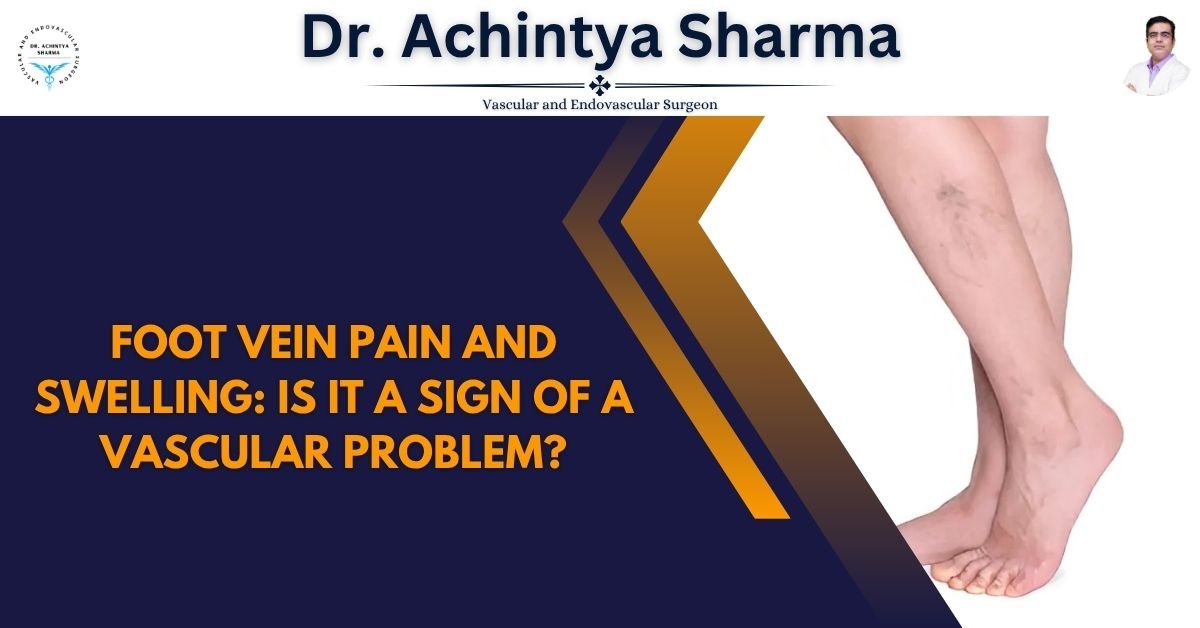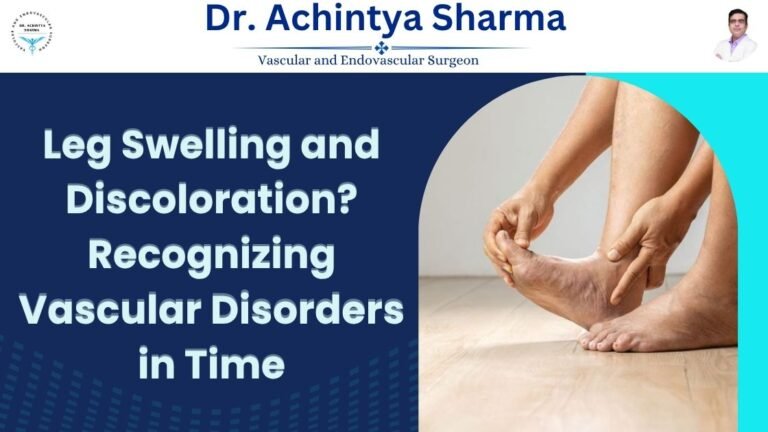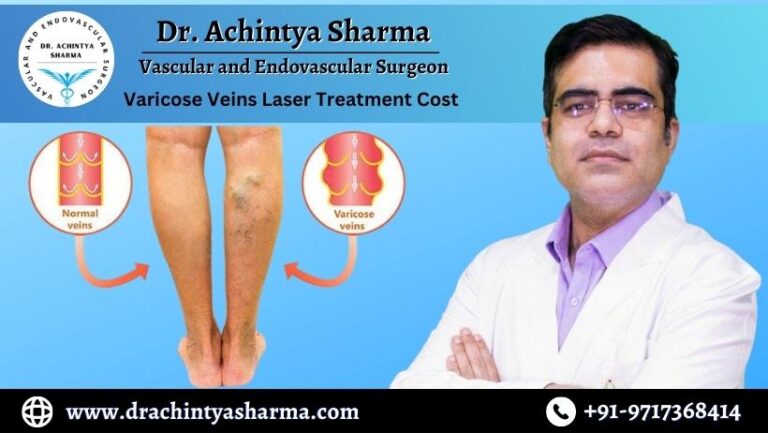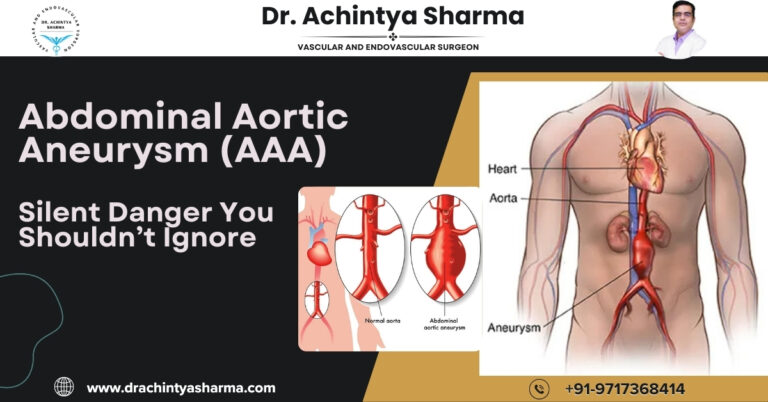Do you often feel pain or swelling in your feet? Notice bulging foot veins after standing or walking too long? You’re not alone. Foot pain and swelling aren’t just from being tired. They might be a sign that something’s wrong with your veins. Many people ignore them, but your body could be warning you that something’s wrong. In this blog, we’ll explore what causes foot vein problems, what signs to watch for, and when to seek help from an expert like Dr. Achintya Sharma. Let’s understand what your foot veins might be saying.
Why Are My Foot Veins Swollen or Painful?
Swollen, aching foot veins can be unsettling. Sometimes, they’re visible. Other times, they just feel sore or tight. What’s happening?
When veins in your feet can’t return blood efficiently to your heart, pressure builds up. This leads to swelling, pain, and even skin changes. This is a sign of poor circulation or vein disease — also known as venous insufficiency.
Here are common causes:
- Standing or sitting too long
- Age or genetics
- Obesity or lack of movement
- Injury or trauma
- Pregnancy or hormone changes
If your foot veins look twisted or feel sore, don’t ignore them. Veins help your blood flow properly. If you leave the problem untreated, it could lead to serious issues like ulcers or blood clots.
When Foot Vein Problems Mean Something Serious
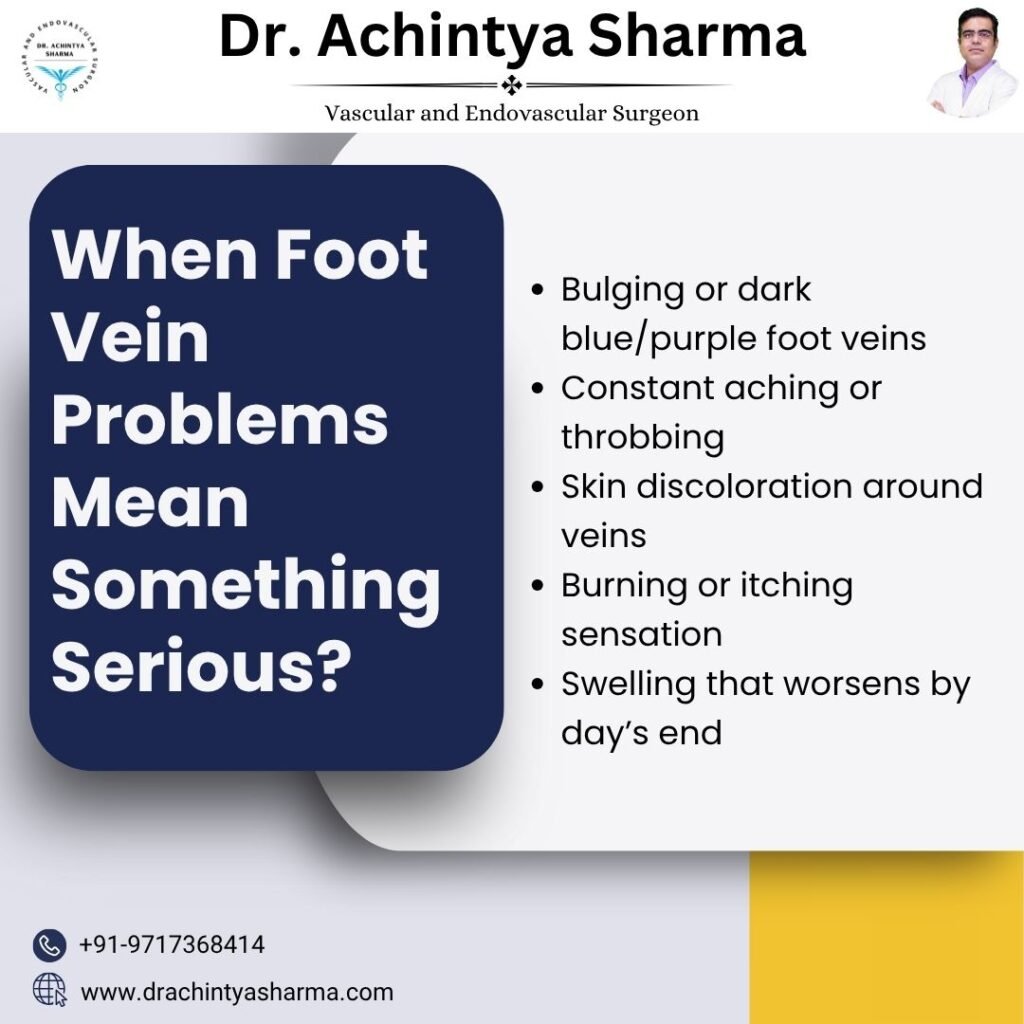
Not every sore foot means trouble. But if you see these warning signs, take action:
- Bulging or dark blue/purple foot veins
- Constant aching or throbbing
- Skin discoloration around veins
- Burning or itching sensation
- Swelling that worsens by day’s end
These symptoms may point to chronic venous insufficiency (CVI) or even deep vein thrombosis (DVT). CVI happens when vein valves weaken, causing blood to pool in your foot veins. DVT is more serious. It’s a blood clot that can move to your lungs and become life-threatening.
Both need medical attention. Early diagnosis prevents complications. That’s where Dr. Achintya Sharma, a trusted vein specialist, can help.
What Can Be Done About Painful Foot Veins?
You want relief — not just a diagnosis. The good news? Treatments today are simple, effective, and often non-surgical.
Here’s what may help:
- Compression socks: They support your foot veins and boost circulation.
- Lifestyle changes: Move more. Elevate your feet. Stay hydrated.
- Laser or radiofrequency therapy: They seal damaged veins and need very little recovery time.
- Sclerotherapy: A safe injection that shrinks swollen foot veins.
- Vein surgery (only in severe cases)
The key is getting the right diagnosis. Dr. Achintya Sharma offers customized care plans that match your needs. He listens, evaluates, and guides you through safe, advanced treatments that work.
Stop hiding your feet or living with pain — it’s time to take care of them. Relief is possible — and easier than you think.
When Should You See a Specialist Like Dr. Achintya Sharma?
If you’ve had ongoing foot pain, visible foot veins, or unexplained swelling for over two weeks, don’t wait. Now’s the right time to see a vein specialist.
Here’s why:
- Early care = better results
- Less risk of complications
- Minimally invasive treatments are available now
- Peace of mind matters
Dr. Achintya Sharma is known for patient-first care. He combines technology with experience to find the root of your vein issues. Whether it’s a cosmetic concern or a sign of vascular disease, he’s here to help you walk pain-free again.
Conclusion
Foot veins may not be something you think about daily — until they start hurting or swelling. Then, they demand your attention. And for good reason. Healthy circulation is vital to your overall well-being. Pain, discoloration, or bulging in your foot veins shouldn’t be ignored. Foot veins don’t change without a reason. Let Dr. Achintya Sharma check early and help you stay ahead of any serious vein problems. Don’t wait for the pain to get worse. Take action now for healthier, pain-free feet and a better life.

